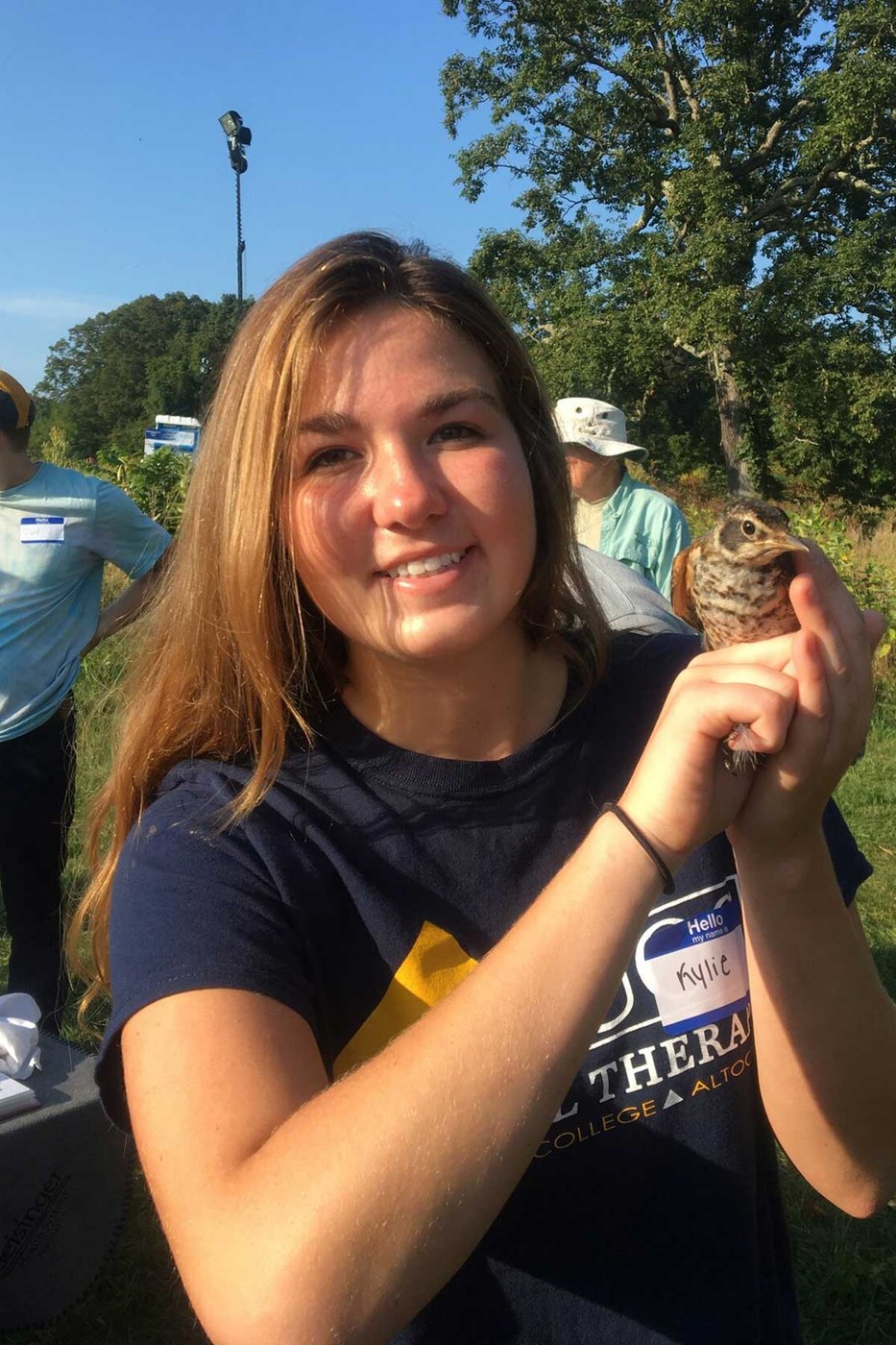This is the sixth short news article written by students, during the professional development class of Spring 2024, about each other's research.

Kylie Green
Spotlight article on Kylie Green
By Malachi Brought
Pennsylvania has had the highest incidence rate of Lyme Disease in the nation for the last 11 out of 12 years. This disease is vectored by the Pennsylvania native black legged tick and extensive research has been conducted to understand how to monitor and control the spread of the tick and its pathogen. Recently, Amblyomma maculatum (Gulf Coast Tick), a tick native to the southeastern United States has been extending its range into Pennsylvania. The gulf coast tick is a vector for Rocky Mountain Spotted Fever (RMSF) in humans, and little is known about how to monitor and control this parasite.
Kylie Green began her academic career at the University of Maryland studying biochemistry and transferred to Penn State’s pre-vet program halfway through her undergraduate degree. As she progressed, she realized that her interests were not to study the treatment of disease, but rather she wanted to study the mechanisms that underlie the transmission of disease and how it can be mitigated. Her position at Penn State brings together her love for animals, field work, and immunology into an area in need of her expertise: disease vector monitoring and management. Kylie is a graduate student in Professor Erika Machtinger’s research group in the Entomology Department at Penn State and she uses her background in veterinary immunology and disease to develop methods for monitoring gulf coast tick populations and disease spread in Pennsylvania.
“We know how to monitor black-legged ticks and the spread of Lyme disease, but we have no idea how to monitor gulf coast ticks and RMSF in Pennsylvania” says Green.
Kylie’s work focuses on determining the host preferences of Gulf Coast ticks and how tick infection impacts the immune response of the host. To understand how these non-native ticks may interact with common Pennsylvania native species, Kylie has enlisted the help of white-footed mice, meadow voles, and Norway rats. She measures the feeding success of the Gulf Coast tick on each of the host species and compares these measures to Pennsylvania native black legged ticks on the same host species. These comparisons give Kylie a look into which mammals the gulf coast ticks are most successfully feeding on and in turn are most likely to be found on in the wild. She is also exploring the immune responses of the different rodents to tick infection to better understand how these immune responses impact tick feeding success.
Rocky Mountain Spotted Fever is caused by the bacterium Rickettsia reckettsi which infects gulf coast ticks as they feed on small mammals or birds during their lifecycle. When an infected tick bites a human, the pathogen can be transferred to the human host. The infection can lead to nerve damage, gangrene of toes or fingers, hearing loss, and partial paralysis if left untreated. The best way to avoid the spread of RMSF during high-risk activities like hiking is to wear protective clothing, apply tick repellant, and always do a thorough tick check afterwards. With researchers like Kylie adding to the knowledge of tick host preference, the state of Pennsylvania and the rest of the Mid-Atlantic region, will be better equipped to predict the path of this parasite and develop targeted management and prevention strategies.
Kylie Green is a graduate student in Professor Erika Machtinger’s research group in the Entomology Department at Penn State. Her research is supported in party by Centers for Disease Control and Prevention.

